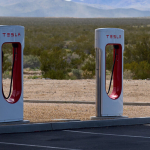
The Biden administration has effectively moved to end the use of coal to keep the lights on in America. On Thursday, the Environmental Protection Agency released four major regulations designed to slash multiple forms of toxic and planet-warming pollution from coal-fired power plants, the nation’s dirtiest source of electricity.
The most consequential of the new rules is aimed at nearly eliminating carbon dioxide emissions from the coal plants. The other three rules would cut the emission of mercury, a neurotoxin linked to developmental damage in children; restrict the seepage of toxic ash from coal plants into water supplies; and reduce the discharge of wastewater from the plants. Once implemented, the rules are widely expected to result in the shuttering of nearly all the nation’s remaining coal plants by 2040.
Here’s what to know about President Biden’s new moves to clean up coal power.
Are the New Rules a Big Deal?
In a word, yes.
Electric utilities have already had to comply for decades with other environmental regulations. They have forced operators of coal plants to install technology like “scrubbers” to remove toxins, like mercury, or to invest in safer ways to dispose of coal ash and wastewater from their facilities.
But the new standards areby far the most sweeping, and the industry says they are impossible to meet. There is no widely used technology available to substantially reduce carbon dioxide emissions from power plant smokestacks. There is one very expensive technique, called carbon capture and sequestration, where emissions are trapped before they reach the atmosphere and are stored underground. But that process has never been deployed in any coal plant in the United States. The cheapest way to comply may be to just shut down the nation’s roughly 200 remaining coal plants.
When Do the New Rules Take Effect?
Under the plan, existing coal plants that are slated to operate through or beyond 2039 must reduce their greenhouse emissions 90 percent by 2032. Plants that are scheduled to close by 2039 would have to reduce their emissions 16 percent by 2030. Plants that retire before 2032 would not be subject to the rules.
But the aging nature of the country’s existing coal plants means that many of the facilities could shut down before they would have to meet the most stringent limits. More than 200 coal plants closed in the past decade, putting the average age of surviving plants at almost 50. The life span of an American coal plant is about 60 years, and roughly one quarter of the existing 200 plants are already slated to retire within the next five years, according to the U.S. Energy Information Administration.













